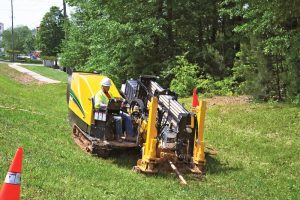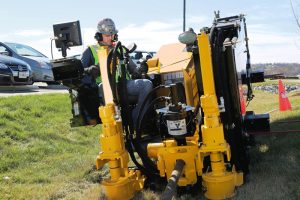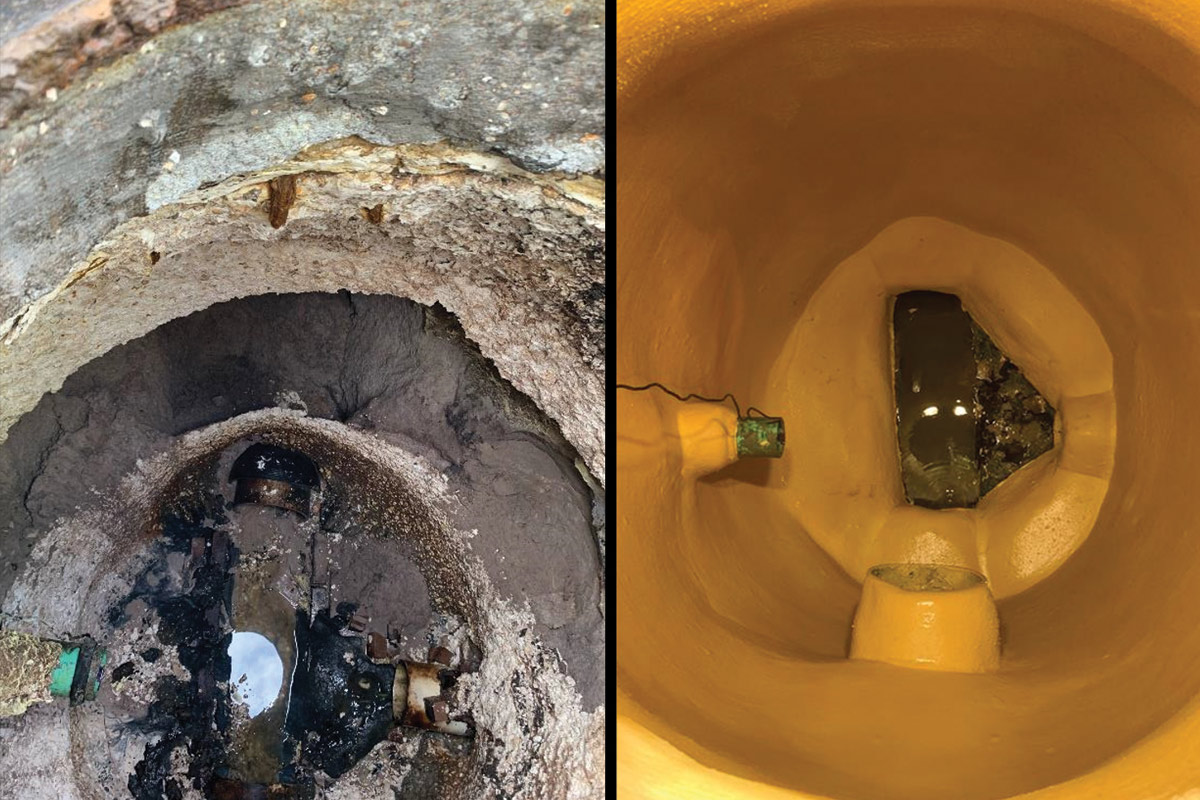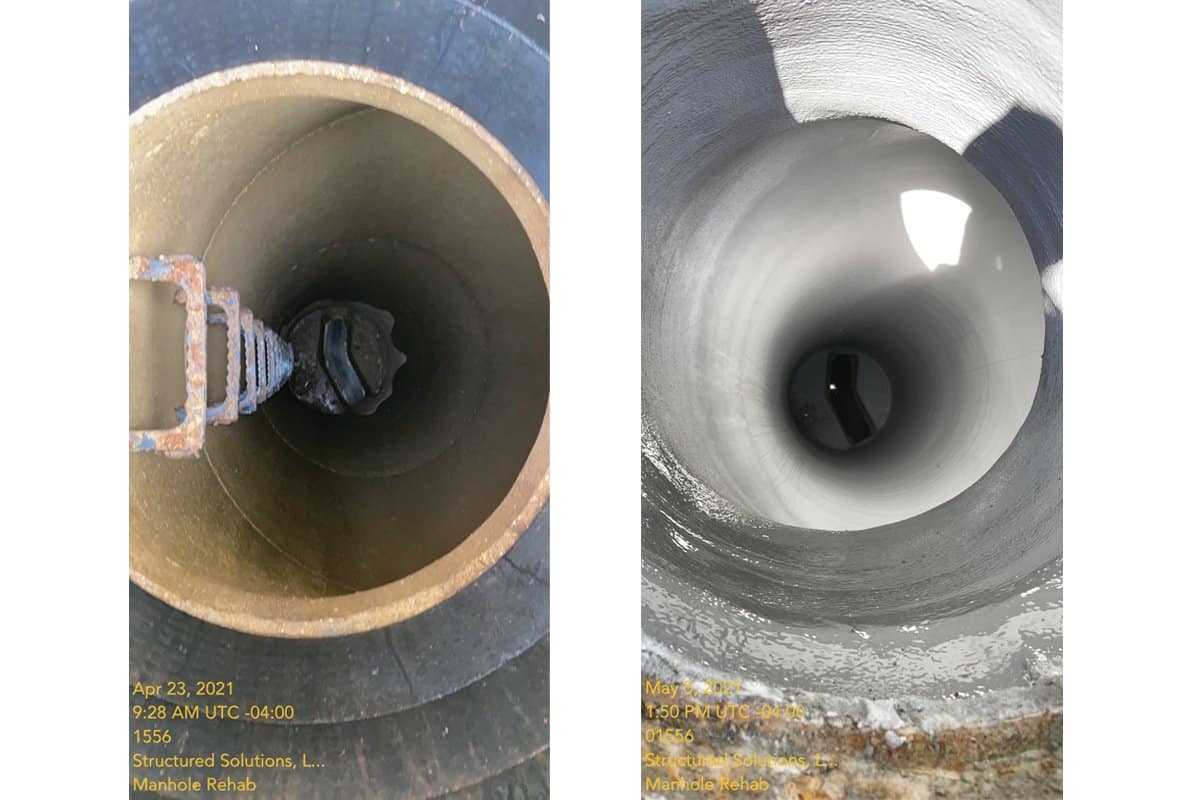
HDD Contractor Tackles Fiber Installations in Missouri
Nathan White doesn’t know what a slow day is like.
As underground construction coordinator for the St. Louis office of Ervin Cable Construction LLC, he supervises multiple in-house horizontal directional drilling (HDD) crews, plus crews from subcontractors. “They’re busy every day,” he says.
RELATED: Fiber Network Allows for ‘Next Generation’ Technology at University
The bulk of that work comes from an ongoing contract with cable telecom company Charter Communications. Ervin Cable’s St. Louis office installs up to 40,000 ft of fiber and coaxial cable each month for the company, nearly all of it by directional boring. Then there are other projects, like a recent 20,000-ft fiber job for another telecom company.

The in-house crews run Vermeer drills ranging in size from a D9x13 Navigator horizontal directional drill on up to a D24x40 S3 Navigator HDD. The newest addition to the fleet is a Vermeer D23x30 S3 Navigator.
Having a full workload is a good position to be in, but that doesn’t mean there aren’t challenges. One is coordinating everything, which is White’s job. Another is that St. Louis, where many of the jobs occur, is notoriously difficult for horizontal directional drilling because of its narrow streets and rights of way, the presence of a lot of existing utilities underground, and its rocky ground conditions.
“It takes a lot of planning and attention to detail,” White says.
Customer Service Is Key to Success
Ervin Cable Construction is headquartered in Kentucky and has several regional offices throughout the Midwest and South. The company works from Texas up to Minnesota and to the East Coast. Founded in 1980, Ervin Cable specializes in underground and aerial installation of fiber-optic, coaxial and copper lines. It offers turnkey services, handling design and engineering, installations, and splicing and testing. Customers include cable and phone companies, long-haul data companies and electric cooperatives that are building fiber-to-premise projects.
“Customer service is the reason we’ve been so successful, hands down,” White says. “Our regional managers and our project supervisors deal with customers one on one and know them on a first-name basis. This is a fairly large company, but we have a small-company feel.”
Charter Communications is one of those customers. Out of its St. Louis office, Ervin Cable has been doing work with the company since the early 2000s, accounting for up to 80 percent of the region’s workload.
RELATED: Growth in Fiber: Trenchless Benefits as People Become More Connected
Ervin Cable does maintenance and new construction work for Charter Communications. It’s split roughly 50-50 between fiber and coax installations. The number fluctuates, but the St. Louis office averages between 20,000 and 40,000 ft a month in new construction. Any given job can be between 100 and 6,000 ft.
Busy Schedule Requires Coordination
White has an Ervin Cable crew working full time out of Columbia in central Missouri, another to the south in the Lake of Ozarks and then three in St. Louis. Things were so busy that Ervin Cable pulled a crew out of Kansas City earlier this year to assist with the western portion of the Charter Communications work.
The in-house crews run Vermeer drills ranging in size from a D9x13 Navigator horizontal directional drill on up to a D24x40 S3 Navigator HDD. The newest addition to the fleet is a Vermeer D23x30 S3 Navigator. The St. Louis office owns one and leases another. White says it has the thrust and pullback his crews need and fits in the footprints of their sometimes snug jobsites.

Ervin Cable’s St. Louis office installs up to 40,000 ft of fiber and coaxial cable each month for the company, nearly all of it by directional boring.
“It’s really a mobile machine, but it has plenty of power,” he says. “We work in a lot of urban rear easements behind homes and inside subdivisions.”
It’s also quiet. White says they have seen a reduction in sound levels, helping with customer relations in residential neighborhoods and improving communication between crew members.
Coordinating so many crews and their equipment requires a lot of planning. How it typically works with Charter Communications is the telecom company dispatches the work to an Ervin Cable project supervisor, who then dispatches it to White. He plans the workflow, assigns a crew, determines what size drill rig is appropriate, schedules it and calls in the locates.
“We have a scheduling meeting every week,” White says. “We schedule the workflow. We prioritize deadlines and dates. Then, on a daily basis, I dispatch the jobs out to our individual crews.”
White says smaller projects take more planning and project management than larger ones because they are completed faster. “The location changes almost every day,” he says. “When we complete one small job, we have to have another job prepared and ready.”
New projects bring new jobsite conditions like the footprint, the number of existing utility lines, ground conditions, and drill and tooling needs. It also increases the odds that something unexpected will occur.
RELATED: Vermeer Corp. and DMACC Partner to Train and Certify HDD Operators
“The only certainty in our business is that it’s uncertain,” White says.
To help with this, his crews are supplied with an array of tooling so they can handle the conditions they encounter. He also believes in having well-rounded crews. He doesn’t have one crew that specializes in rock bores and another in dirt. His crews can drill in all ground conditions. Ervin Cable also cross-trains crew members.
“I have guys who are really good at what they do, but every one of them can do the other functions on every job,” White says.
This also helps Ervin Cable recruit and retain good employees, which White calls the “biggest challenge in our industry.” Treating employees well also is important.
“Our employees are not a number,” he says. “We spend a lot of time and effort making sure that these guys have jobs. We pay fairly well. We cross-train. As much as anything, we take care of our people like they’re family.”
St. Louis Difficult for HDD Fiber Installs
Ground conditions vary throughout the large area the Missouri-based Ervin Cable crews are working. A look at the St. Louis metro area gives an idea of the challenges they face.
White breaks St. Louis into three parts. North of downtown, it’s primarily a sandy loam soil he calls “good dirt. We like drilling in that area.” The south side is a hard clay with rock debris in parts. And the southwest region of the metro area is about 70 percent hard rock.
In harder ground the crews typically use a rock bit with carbide for pilot bores. At times they’ll use an air hammer system. In those conditions they almost always use a back reamer, typically an all-terrain fluted reamer. On average, they use a 6-in. reamer for Charter Communications installations.
A recent HDD job Ervin Cable did for AT&T shows some of the challenges of drilling in St. Louis. The company installed 20,000 ft of 3 ¼-in. pipe containing fiber to feed a cell tower. Ervin Cable also spliced the fiber and installed the handholds. The project took about two months. Bores averaged 500 ft each, and the ground conditions were about 50 percent dirt and 50 percent rock.
An Ervin Cable crew used a Vermeer D24x40 drill. A subcontractor handled many of the most difficult rock bores with a Vermeer 36x50DR Series II Navigator HDD, although the Ervin Cable crew also drilled through rock.
“My crew drilled in some pretty nasty rock debris,” White says. “We dug boulders out in places where we bored that were 5 ft in diameter, and the drill made it through it.”
There was extensive utility locating on the project. Each shot had on average 15 locates. White had a pothole crew with a 500-gal vacuum excavator manufactured by McLaughlin running in front of the drills. They left the holes open, although fenced in for pedestrian safety, so the crews could watch the bore head pass the line. The pothole crew restored the ground after a bore was completed.
White describes the bore path as being along an “urban highway” — they set up in the rights of way beside roads and were drilling in front of businesses. The drills and support equipment easily fit in the footprint. That’s not always the case in St. Louis.
White says St. Louis is an old city with narrow streets and hard-to-access jobsites. It also has a lot of existing utilities in the ground and, as mentioned, the soil conditions vary greatly.
“Everything in St. Louis makes it tough to be a directional drill contractor,” he says.
Gregg Hennigan is a features writer at Two Rivers Marketing, Des Moines, Iowa.




